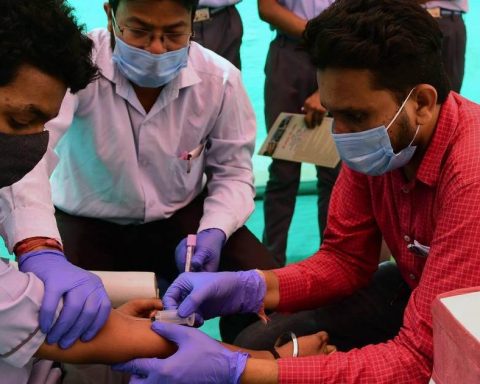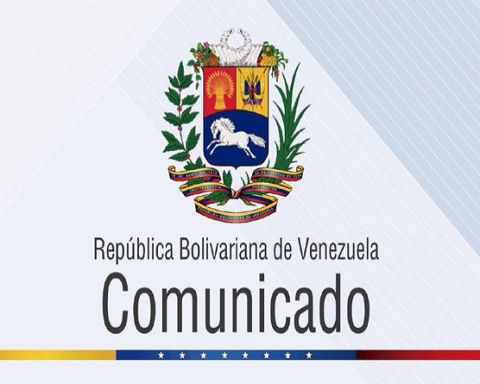The Economic Commission for Latin America and the Caribbean (ECLAC) suggested that in order to overcome the trap of low growth capacity in which the region is mired and avoid a third decade of loss, Countries need to improve productive development policies in each territory.
(Read: Colombia registers low levels of business productivity: analysis by sector)
Within the document, it was evident that the efforts that the region has been making in terms of productive development policies They are marginal compared to the productivity challenge that exists and compared to what other countries are doing in this area.
Of the nations studied, it was identified that The resources allocated for this type of policies are equivalent to between 0.2% and 1.2% of the Gross Domestic Product (GDP).figures that are “very low” compared to the 3.5% invested by some OECD countries.
(See more: Agricultural growth, more due to external factors than productivity)
In the case of Colombia, ECLAC assured that since the National Development Plan (PND) 2018-2022, years that correspond to the period analyzed for the report, The country was basing its productive development policy through the promotion of entrepreneurship, formalization, productivity and the area of science, technology and innovation.
“Within the framework of the aforementioned policies and the PND, 129 instruments of support for productive development were identified, offered in 2021 and 115 in 2022. The types of instruments considered include non-financial support, that is, support services provided directly by government institutions for productive development.”, they highlight.
Thus, it was recorded that in 2021 the budget allocated by the public sector to the 129 productive development instruments totaled US$1,266 million, which represented 0.4% of the GDP of that year. Additionally, For the 115 plans for 2022, resources worth US$1.1 billion were allocated, equivalent to 0.32% of the country’s GDP.
(Read also: Using AI will help generate profitability and productivity in agriculture)
Productivity
iStock
“Considering the number of instruments, it is highlighted that 43% corresponded to direct services provided by institutions, such as extension or advice (30%), training and capacity building (11%), and information and platforms (12%), which represents relatively low average expenditure amounts for these devices.“, they analyze.
(Read: ICT Ministry invests $40 billion in digital innovation for Colombia)
In terms of sectors, More than half of the budget was provided by the Ministry of Science, Technology and Innovation, although this portfolio only offered 12 instruments. The Ministry of Culture also provided 14.2% of the resources between 2021 and 2022, with eight instruments.
According to ECLAC, the high participation of the Ministry of Science, Technology and Innovation and the Ministry of Culture is due to the fact that This includes tax benefits for which, due to their allocation mechanism, it is possible to know the planned budget.
For its part, the sector of Trade, Industry and Tourism accounted for around 11% of the total planned budget, with an offer of more than 60 instruments in each year, while the agricultural sector participated with 14.5% of the planned budget and offered 24 instruments on average in the two years.
(See more: Women remain the best payers of their obligations, according to Mibanco)
Another point to highlight about the productive policies proposed during 2021 and 2022 in the country is that about a third of the instruments, on average in that period, They focused on supporting companies to improve their competitiveness and their productivity in general, and had a similar percentage of budgeted resources (30.2%).

Productivity
iStock
Behavior of the region
Returning to the general results of the countries of Latin America and the Caribbean, ECLAC showed that in the period studied Tax instruments predominated to support productive policies, accounting for 61.5% in Argentina and 87% in Brazil.
(Read more: Transforming productive development, the key to reducing inequality in the region)
However, An exception is Chile, where subsidy devices prevail, above 70% of the total. “There is also a dispersion of resources among multiple instruments of limited scope, which atomizes the efforts made, thus reducing their capacity to impact,” they say.
However, they insist that it is necessary not only to promote greater growth, but also to make it more diversified and less volatile, but also that it is redirected towards greater social inclusiveness and that it is environmentally sustainable.
While there are several factors that contribute to the region experiencing, structurally, low and volatile growth rates, one of the most relevant has to do with the investment gap.With only 20% of GDP, Latin America and the Caribbean has one of the lowest levels of total investment of all regions worldwide, although with significant divergences between the countries that comprise it.“, they analyze.
(See: The effects of the El Niño phenomenon on agriculture were reflected in productivity)

Latin America and the Caribbean
iStock
Opportunities for improvement
According to ECLAC, the productive development policies that they themselves promote They require governance mechanisms and collaboration between institutions and actorsthis being a key factor.
(See also: Sustainable companies are more efficient and profitable, index reveals)
For example, A great dispersion was found among the institutions dedicated to this type of policies, where in the majority of the 33 countries that make up the region there are at least five or six entities dedicated to productive regulations. However, these are “poorly” articulated with each other.
For this reason, a series of opportunities for improvement are proposed so that the countries of the region can guide governments towards improving productive policies. They highlight the following: increase efforts in line with the new vision to have a greater impact and strengthen multi-stakeholder and multi-level governance.
(Read: Informality, the challenge facing jobs in the recycling industry)
They add that it is necessary to strengthen the technical, operational, political and prospective capacities of institutions; create and strengthen cluster initiatives in line with productive priorities; Strengthening the commitment of all stakeholders, particularly the private sector; deepen territorialization and adopt a strategic line of internationalization.


















